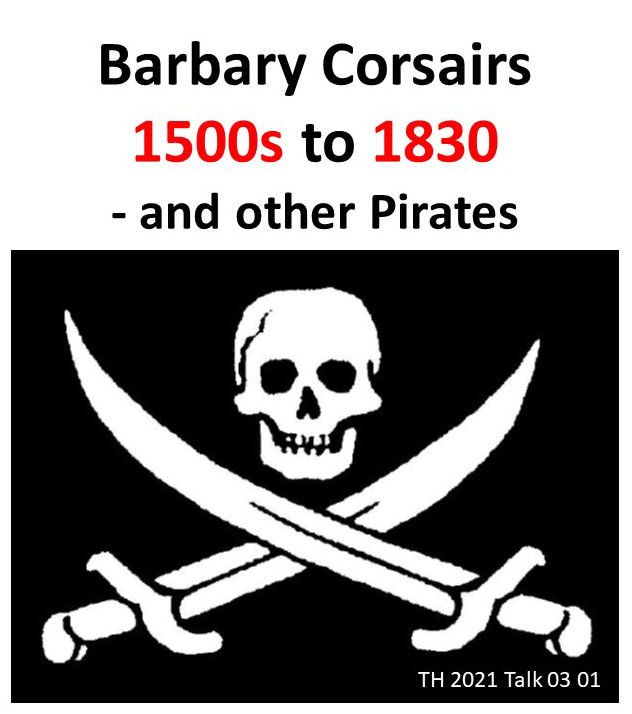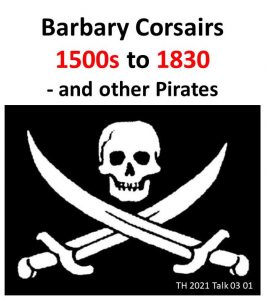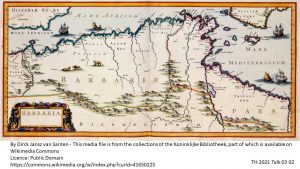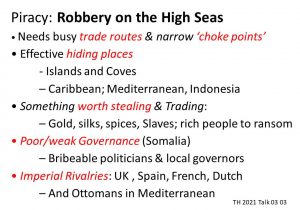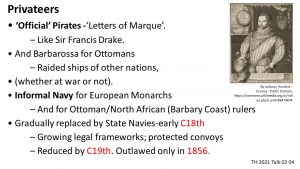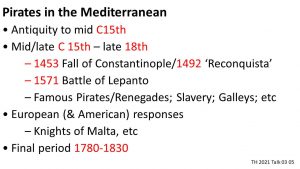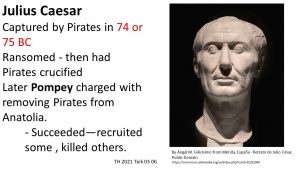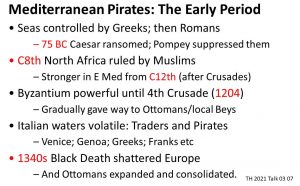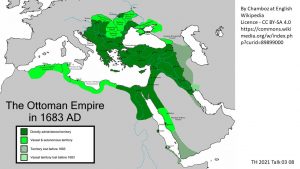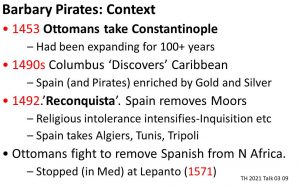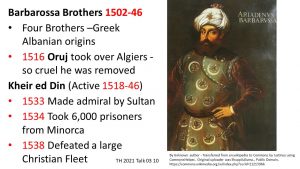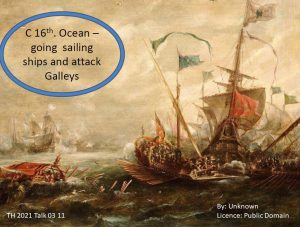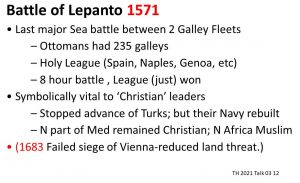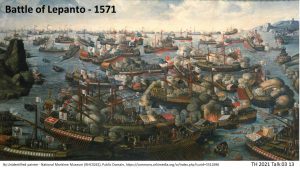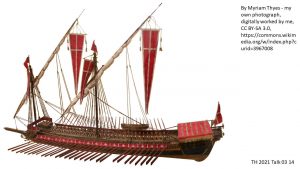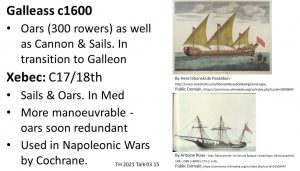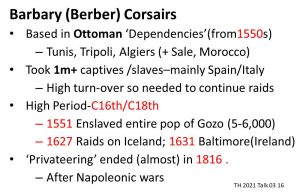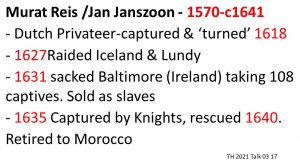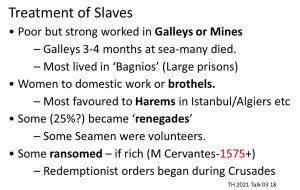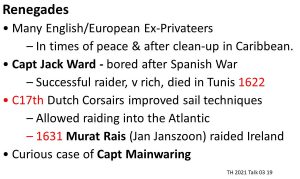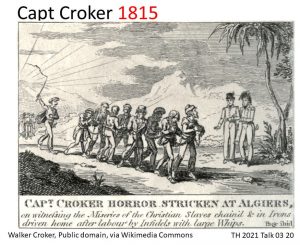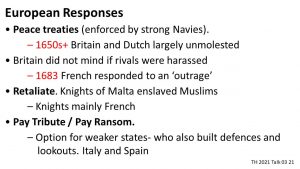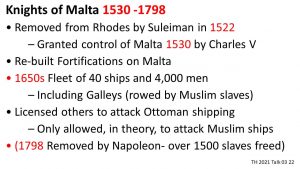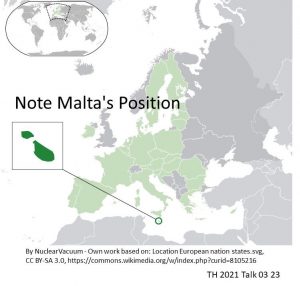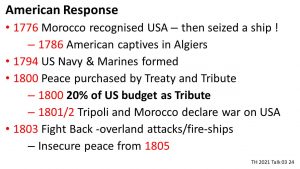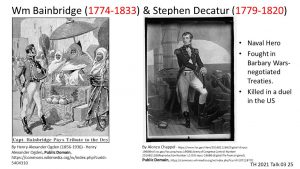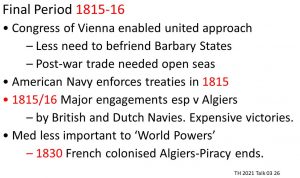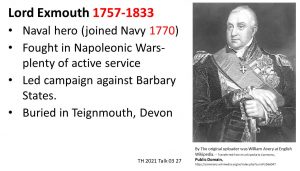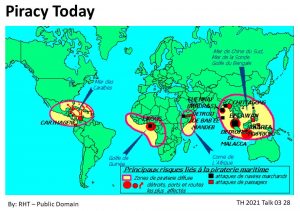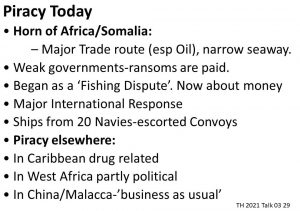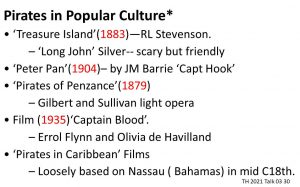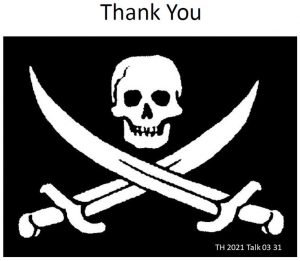Podcast: Play in new window | Download (Duration: 46:40 — 42.7MB)
Season 2021 – Talk 03 – The Barbary Corsairs
In The Barbary Corsairs Richard Thomas tells us about these pirates who exercised power in the Mediterranean over a number of centuries. Because the talk makes use of maps, pictures and other presentation material I suggest that you open the image gallery below.
Click a thumbnail below to view the image gallery that accompanies the talk.
Robbery on the High Seas:
Richard tells us that piracy requires busy trade routes with narrow choke points because this collects target ships in a defined area. It is even better if effective hiding places, such as islands and coves, are available.
There needs to be something worth stealing, traditionally gold, silks, spices, slaves and people to ransom. Today high value goods such as oil.
Poor and weak governance help, especially where it is possible to bribe politicians and governors. Imperial rivalries also contribute – think of Francis Drake ‘singing the King of Spain’s beard’.
Drake a pirate??… a privateer is an ‘official pirate’ because the ‘Letters of Marque’ only legalise piracy in the eyes of the country issuing them.
In the days before formal navies Privateers perform the role of an informal navy. Official state navies start to appear in the early 18th Century and so privateers are outlawed in 1856.
Piracy in the Mediterranean:
Piracy starts in ‘antiquity’. Pirates capture Julius Caesar in 75, or maybe 74, BC. A ransom is paid and Caesar’s sailors then catch the pirates and crucify them.
The high point of piracy is during the Ottoman Empire. The Battle of Lepanto in 1571 is a major turning point.
The ships:
Richard tells us that the ship designs evolve from oar powered galleys through the Galleass of the 1600s, with oars, cannon and sails, to the Xebec 0f the 17th and 18th Centuries. Admiral Cochrane has Xebecs in his fleet during the Napoleonic Wars.
Slavery:
Estimates suggest that over 1 million people were taken as slaves by the Barbary Corsairs. Many of these come from raids on the northern Mediterranean shores. They take the whole population of Gozo on one raid – 5 to 6,000 people! In 1627 they raid Iceland and in 1631 Baltimore in County Cork, Ireland.
Oar powered war galleys require a regular supply of oarsmen!
Listen to the podcast to hear the rest of this amazing story!
Please note:
This podcast is a recording of a talk on Zoom and there are a few extraneous noises.
For copyright reasons it is not possible to publish all the illustrations from the original talk. I use alternatives where they exist.
About this podcast:
This podcast is an edited recording of a talk first given to the Farnham u3a World History Group.
The Farnham u3a site is found here.
This podcast is also available through Amazon Music, Apple Podcasts, Castbox , Deezer, Podchaser, Spotify, Stitcher and Vurbl and others.
AKM Music licenses Media Magazine for use as the theme music.
© The MrT Podcast Studio and Farnham u3a World History Group 2018 – 2022

